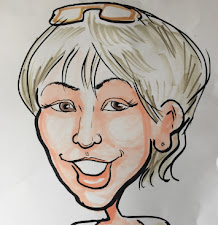By Karen Cioffi
Years ago, a client told me that I don’t write for the client; I don’t even write for myself; I write for the reader.
This was in regard to a picture book I wrote for the client and it’s the best compliment I’ve ever gotten.
This is how every author should write.
Two key points when writing for children are: Write for the reader and take professional advice.
At this point in my writing career, I’ve probably written around 350 stories, between ghostwriting and rewriting. Most of them are ghostwritten.
That’s a lot of clients. And even though I’ve had a number of series clients and return clients, all-in-all, I’ve dealt with at least 300 individual clients.
And I’m most likely underestimating this.
My point, though, is that most authors, especially new authors or wanna-be-authors, don’t realize the importance of writing for the reader.
So, what exactly does this mean?
A perfect example of this is a young adult story I’m currently working on. It’s over 100,000 words and is engrossing, but it’s also very complicated.
I’m working with the client for around nine months or so, and a running problem keeps coming up: he writes for himself.
-He knows what every character’s backstory is – every little detail.
-He knows the story’s backstory.
-He knows the history of the story topic intimately.
-He knows why Character Z is evil.
-He knows how the enemy is getting their information.
-He knows how the next two books in the trilogy will pan out.
The problem…
The reader doesn’t know. And, the client more than occasionally throws in something that the reader will get lost on.
The client can’t grasp that the reader can’t read his mind.
It’s easy to fall into this hole.
It’s super easy to get caught in this scenario, especially if it’s a long story and you’re writing independently.
Again, you know what you intend. You know what’s happening – you know the why to what’s happening. But this doesn’t mean the reader will unless you clue them in.
To give a more straightforward example, suppose a story has four brothers battling an enemy, but it’s mentioned somewhere that there are five brothers. The fifth brother is mentioned vaguely in a very brief scene, then just disappears.
The author knows who the fifth brother is, where he is, how he vanished, and why he vanished. The author thinks it’s important to mention the fifth brother because that brother will play a big part in another book. The problem, again, the reader doesn’t know any of this.
The reader will begin to wonder. Who’s the fifth brother? Why was he there and then vanished? What is his place in the story? She’ll possibly get annoyed that the author even mentioned the fifth brother.
You don’t want the reader to feel she’s left out of the loop or that the story is too complicated for her. Give the reader what she needs to be engaged in the story and on top of it.
LOL Writing this, I’m not even sure if I’m being clear enough. I know what I’m trying to say; I hope it translates over.
Readers are savvy and can read between the lines as long as the author provides enough clues or information.
Write with clarity. Don’t expect the reader to be a mind reader.
Finally, if you’re working with a professional editor, rewriter, or ghostwriter, take her advice, especially when it’s on something that just makes sense.
ABOUT THE AUTHOR
Karen Cioffi is an award-winning children’s author and children’s ghostwriter, rewriter, and coach with clients worldwide. She is also the founder and editor-in-chief of Writers on the Move and an author online platform instructor with WOW! Women on Writing.
Karen’s children’s books include “Walking Through Walls” and “The Case of the Stranded Bear.” She also has a DIY book, “How to Write Children’s Fiction Books.” You can check them out at: https://karencioffiwritingforchildren.com/karens-books/. If you need help with your children’s story, visit: https://karencioffiwritingforchildren.com.
MORE ON WRITING AND BOOK MARKETING
Tips for Getting Known
Writing Inspiration - Get a Club
Theme - The Heart of Your Story

































